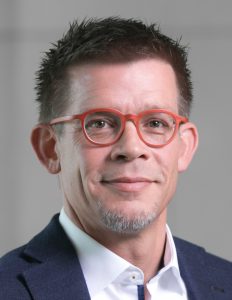- The Laboratory
- Organization
- Departments
- Jobs
- Analysis book
- Contact
- News
- Publications
- Download


![[Annual Report 2020] PROTECTING OUR TEAM AGAINST COVID-19 INFECTION: HOW AUTOPSIES ARE CONDUCTED SAFELY AND WITHOUT WAITING TIMES](https://lns.lu/wp-content/uploads/2021/11/lns_smj_16-1280x853.jpg)
Performing an autopsy is clearly a contact activity. COVID-19 has made the conditions for these examinations more difficult, so that in the LNS’s Forensic Medicine Service, processes have had to be completely changed to ensure maximum safety for all those involved.
The LNS’s Forensic Medicine Service has only been in place since 2014. Its main tasks include autopsies, which are mainly commissioned by the district courts of Luxembourg City and Diekirch. The service’s aim is to determine the cause of a death or to clarify the circumstances of a crime. In cooperation with the services of Forensic Toxicology and Forensic Genetics, degrees of intoxication can also be determined, and persons identified.
Before forensic medicine moved into the LNS’s new headquarters in Dudelange, which had only recently opened, autopsies were performed by experts from the neighbouring countries. The fact that Luxembourg’s own forensic medicine services were only set up a few years ago has, however, proved to be a fortunate coincidence in coronavirus times with regard to technological equipment, as the head of service, Dr Andreas Schuff, points out:
“Since our laboratory is still very young, we are technologically at the very cutting edge. This starts with room design, continues with ventilation, and extends to the supply of quality masks and protective clothing of all kinds. All this helped us when it came to switching to crisis mode in March 2020, with the aim of being able to continue our work as smoothly as possible.”
| Keeping things running smoothly meant contending with several factors: demand for autopsies did not diminish even with the pandemic, and at the same time, there were entirely new measures to be taken to ensure the safety of everyone in the room. What’s more, at the beginning of the COVID-19 crisis, there were many questions that were not answered until well into 2020, says Andreas Schuff:
“For example, we were not sure at the beginning whether a possible coronavirus-infected corpse could be a source of infection, and for how long. We got reliable answers to this question from colleagues in Frankfurt, among others, who specifically investigated this issue and came to the conclusion that infection with the virus can also occur via a dead body, for at least 17 days from the time of death.” |
 Dr Andreas Schuff |
Regardless of these findings, the LNS’s forensic experts had been playing it safe from the beginning, and treated every corpse to be autopsied as a potential health risk for the living in the room. This was a top priority because there are always several people present at a post-mortem examination. To protect these people from infection, several measures were taken from March onwards.
One of the first essential steps taken with a view to minimising the safety risk was to reduce the number of experts present at autopsies, as Andreas Schuff explains: “As a rule, we always work in teams of three in normal times, consisting of two forensic pathologists and one assistant. Here, we very quickly switched to one forensic pathologist and one assistant.”
This reduction in team size prevents, not least, a situation where two staff members would need to be on sick leave at once in the event of a COVID-19 infection, which would inevitably lead to immediate delays in procedures in the case of this rather small (seven-staff) service. This in turn would have consequences both internally and externally, as Andreas Schuff explains:
“Our service performed 85 autopsies in 2020. For most of them, there is a lot of time pressure because there are legal questions which we as forensic doctors help answer. In addition, against this background, representatives of the judiciary must also be present with the doctor in the autopsy room, and we have of course included them in our COVID-19 protective measures.”
Specifically, these measures mean: FFP-2 masks are mandatory for everyone present in the post-mortem room, as is an expanded range of protective clothing including a second pair of gloves. In addition, the room is permanently ventilated, applying laminar flow ventilation technology. A further, important step is taken even before the autopsy, says Andreas Schuff: “Before we begin, we take a throat swab on the corpse and wait for the virological result (PCR analysis).”
To ensure maximum safety, another swab is taken from the bronchi tubes in the course of the autopsy. When it comes to what happens after the body is examined, things have become less “virus-friendly” since March 2020: “We have digitalised some processes. For example, we exchange information with our clients via video conference, and even identification sometimes takes place in this new, virtual way.”
Download the LNS Annual Report 2020: https://lns.lu/publication/annual-report-2020/
